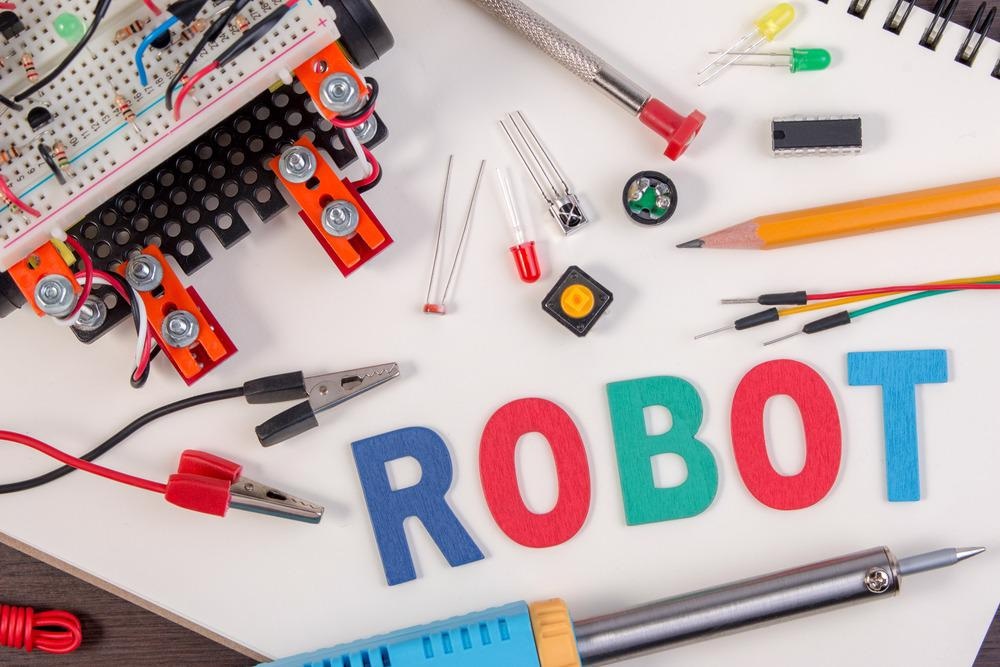BEAM (Biology, electronics, aesthetics, and mechanics) robotics is a type of robotics where devices do not use microprocessors. In this article, an overview of the subject will be provided.

Image Credit: ShutterStockStudio/Shutterstock.com
What are BEAM Robots?
BEAM robots differ from others as they do not use microprocessors. Instead, they use analog circuits to produce a simple design.
Multiple simple behaviors are directly linked to sensors with nominal signal conditioning. While BEAM robots are not as flexible as robots that use microprocessors, they are low-cost, robust, and efficient, and can perform tasks competently. Mark Tilden coined the term in 1990 in Ontario, Canada.
BEAM robots are focused on reaction-based behaviors and attempt to mimic the behaviors and characteristics of living organisms. Aesthetically, they follow the principle of “form follows function.” Designs are related to the desired functionality of the robot.
Principles and Mechanisms of BEAM Robots
The basic principles of a BEAM robot focus on the ability of a machine to respond to stimuli. Tilden’s underlying mechanism uses a “Nervous Network” (Nv), which is a non-linear analog control technology that simulates the behavior of biological neurons.
Prior to the introduction of BEAM robots, Ed Reitman performed similar work. The circuit is often compared to a shift register, with several features facilitating its use in mobile robots.
There are other rules that govern BEAM robots. These include following the “keep it simple” principle with minimal use of electronic components, the recycling and reusing technoscrap, and self-powering the robots with energy sources, mainly solar power. These rules are applied with varying degrees.
Types of BEAM Robot
There are several types of BEAMbot, all of which include the suffix -trope in their names. They are designed to respond to different types of stimuli. Furthermore, there are variations that both go toward the stimuli, and those which go away from it.
Audiotropes react to sound stimuli, phototropes, which are the most prevalent type of BEAMbot, respond to light, radiotropes react to radio frequencies, and thermotropes respond to temperature. Photophiles, which react by going toward light sources, are also referred to as photovores.
These devices are classified due to their movement and positioning mechanisms. Sitters are stationary robots that are physically passive. These include beacons, which transmit signals for other BEAMbots, and pummers, which display a light show.
Squirmers are stationary robots that perform an action. Types of squirmer include heads, which follow phenomena such as light and magbots, which use magnetic fields for movement.
Sliders move smoothly across a surface by employing a sliding mechanism while maintaining contact with the surface. Crawlers (including tracked robots, turbots, and inchworms) use tracks or appendages for their mode of action.
Jumpers use a springing action to propel themselves off the ground, and rollers move by rolling across a surface.
Walkers use legs to achieve differential contact with the ground.
Swimmers are designed to move through water – boatbots on the surface, subbots underneath.
Fliers are airborne and use rotors, wings, or a buoyant balloon to stay in the air for sustained periods. Climbers use ropes or wires to move up or down a vertical surface.
Hybrid Designs
While BEAM robots primarily work on the principle of simple analog circuits rather than complex microprocessors, there are several successful hybrid designs that have been researched.
In these designs, which can be likened to a horse and a rider, the “horse” part of the hybrid robot uses BEAM technology to implement behavior, while the “rider” uses a microprocessor to guide the behavior of the horse.
These hybrid designs marry robot control systems with the flexibility of dynamic programming.
Commercial BEAM Robotics Applications
BEAM robotics is still a niche field with limited commercial application. Exceptions to this are the Roomba from iRobot, which is a hugely popular robotic vacuum cleaner, and some lawn-mowing robots on the market.
Mainly, the field is limited to hobbyist and educational devices, toys, and prototype motion systems. Hexbugs are another notable example. This brand of infrared sensing and automaton toys uses many BEAM principles in their design. Mark Tilden has recently been working with WowWee Robotics, which designs toys such as the popular RoboRaptor.
Challenges
The field of BEAM robotics is growing, with more companies applying the design principles of BEAMbots. However, challenges exist with the technology, hindering a more widespread adoption across the robotics industry.
One of the main challenges is the neural network and its perceived random nature, presenting problems with the successful diagnosis of problems and manipulation of the circuitry.
Designers are required to learn new techniques to overcome these issues. Efforts have been made to address this key challenge in recent years. Moreover, BEAMbots do not generally learn from past behavior, which is far easier to achieve with a microprocessor design.
However, BEAM robots are simple and cost-effective and can be built in a short period of time, making them good educational tools with high degrees of customizability.
The Future
The potential of the field of BEAM robotics is evidenced by the growth of commercial applications of BEAMbots; the field has potential for future development. Other technologies such developed boards including Raspberry Pi can increase the functionality of these robots. Research is ongoing in the field.
Continue reading: Vine-Like Soft Robot with High Controllability and Multiple Degrees of Freedom
References and Further Reading
Robohub (2012) BEAM Robotics with Mark Tilden [online] Robohub.org. Available at: https://robohub.org/robots-beam-robotics/
Brown, P (2017) What are BEAM Robots? [online] Electronics 360. Available at:https://electronics360.globalspec.com/article/9247/what-are-beam-robots
Disclaimer: The views expressed here are those of the author expressed in their private capacity and do not necessarily represent the views of AZoM.com Limited T/A AZoNetwork the owner and operator of this website. This disclaimer forms part of the Terms and conditions of use of this website.